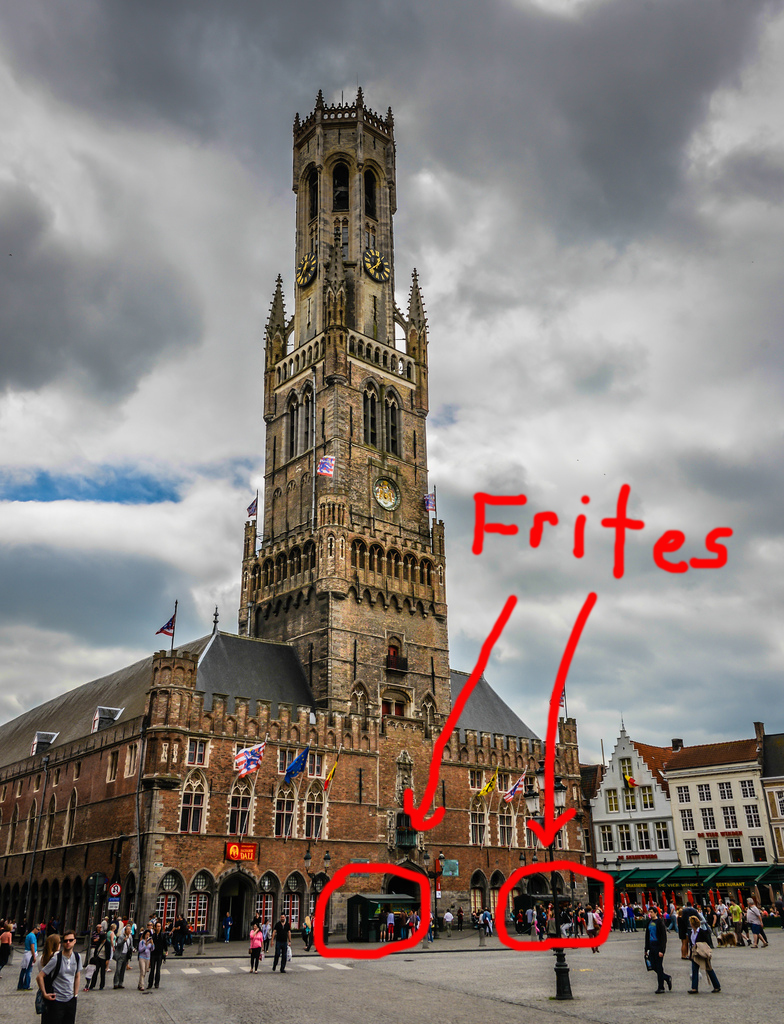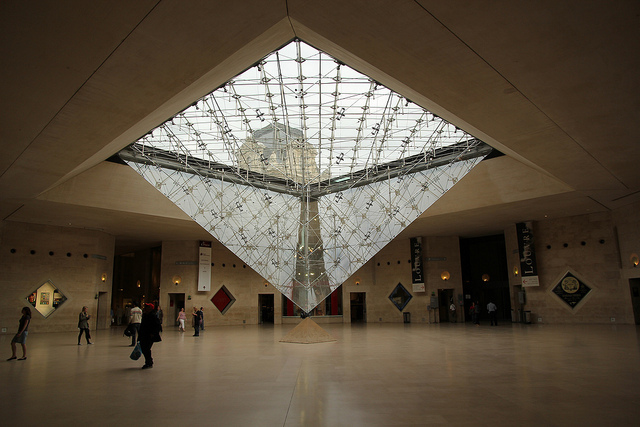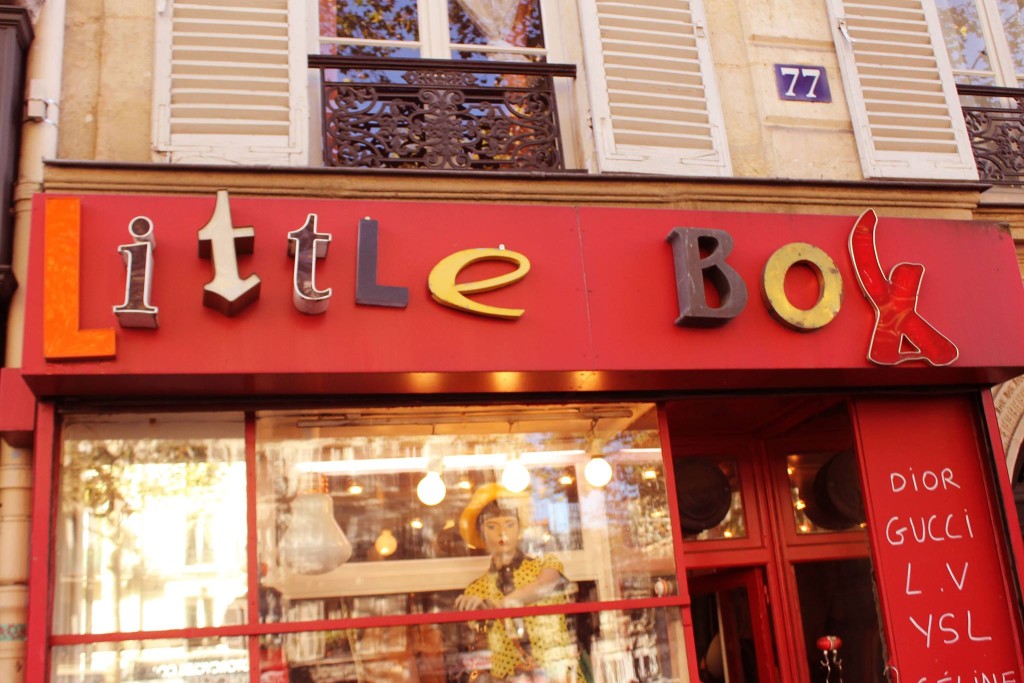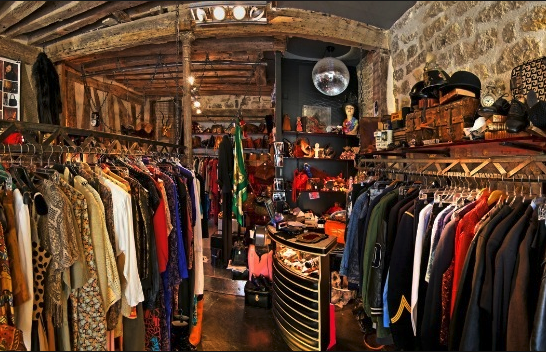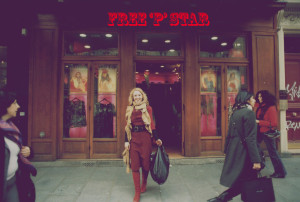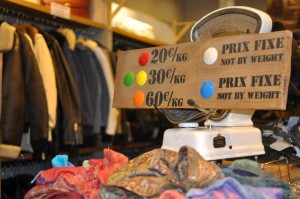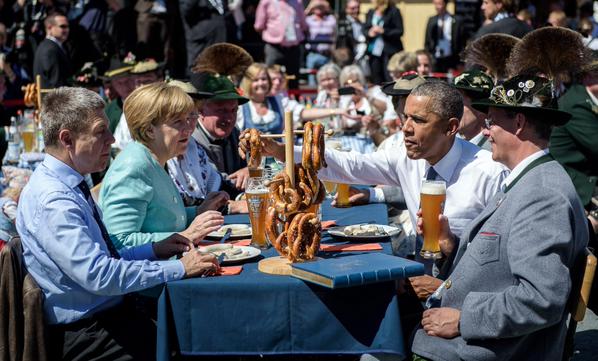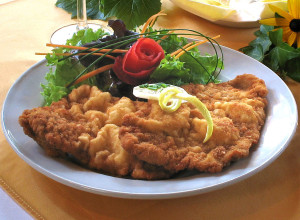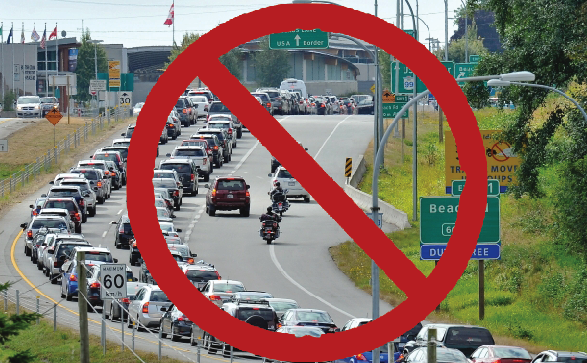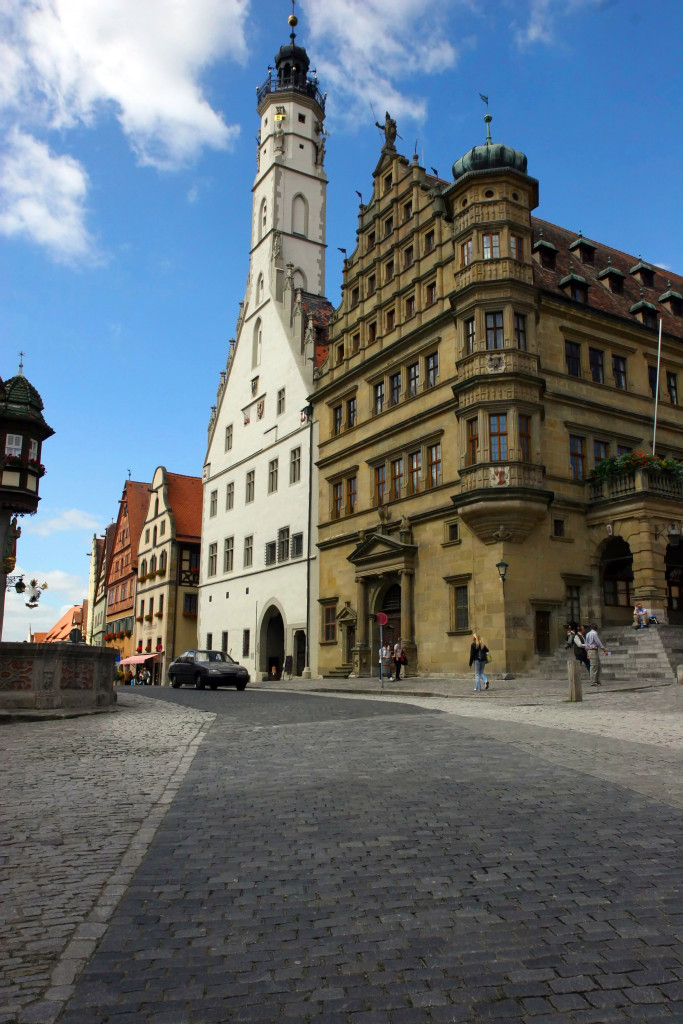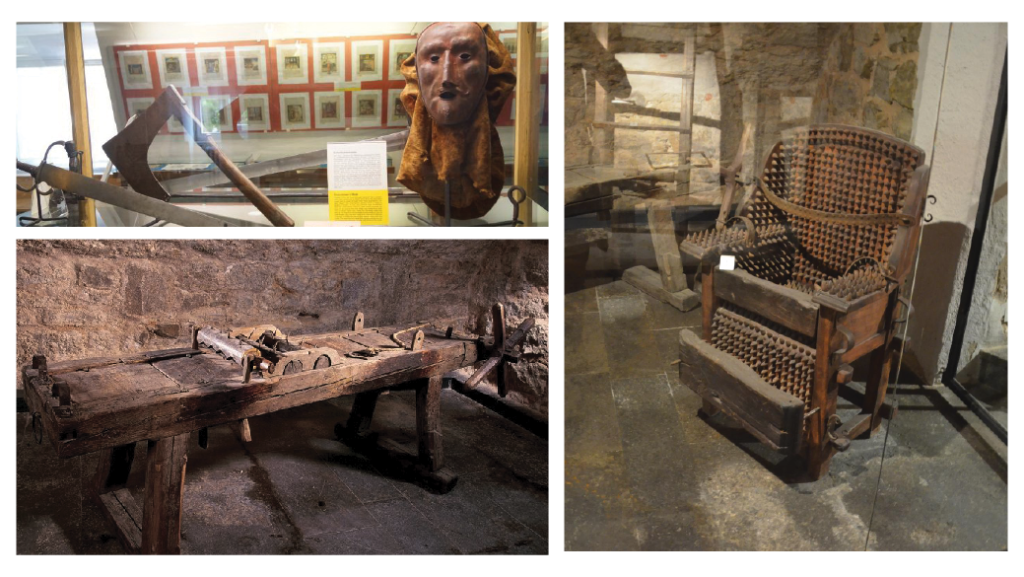They don’t call Belgium and the Netherlands the “low” countries for nothing. The “nether” in “Netherlands” actually means “lower”. With most of the land at or below sea level, and nary a hill in sight, you shouldn’t be surprised that in some regions of the Netherlands and Belgium, there are more bicycles than people per capita (some people own 2 bikes – a city “beater” and a fancy road bike for the weekends)! In Amsterdam alone, 60% of all trips are made by bicycle. Everyone uses this mode of transport – bankers, students, delivery people, priests, politicians, police – it’s really a way of life. On one of my tours in Bruges, Belgium, the group had some free time and I asked my Dutch bus driver if he wanted to rent a bike with me and ride out into the countryside. He took it as a bit of a challenge, asking “You can think you can keep up with an old Dutchman on a bicycle?” I did OK.
I’ve always advocated doing as the locals do when traveling – it’s part of the OneLife Tours philosophy. So the next time you’re in the Low Countries, rent yourself a bike and see how easy it is to navigate around town or take a little side trip out into the country.
Here is some practical advice for renting bikes in my favourite cities in this region: Amsterdam, Brussels, and Bruges. Note that pretty much any town will have bicycle rentals available – just ask your hotel or B&B for advice (sometimes hotels even have free loaner bikes for their guests – very convenient!)
Amsterdam
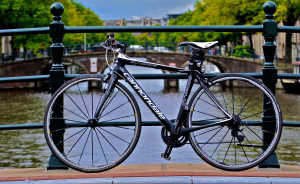 Rental shops abound in Amsterdam, but here are two that are very central with helpful staff and reasonable rates:
Rental shops abound in Amsterdam, but here are two that are very central with helpful staff and reasonable rates:
Frederic Rent-a-Bike: Very close to Central Station, with a good selection of well-maintained, comfortable rental bikes. Hours: daily 9:00 to 17:30 / Brouwerscgracht 78 / tel. 020-624-5509
MacBike: Huge rental stock, located right at Central Station (with a couple of smaller shops further out from the centre). You can get information here about different options for self-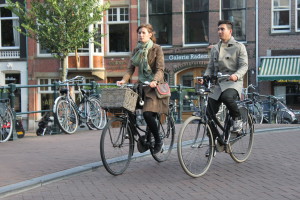 guided bike tours in town or in the countryside for €1. Hours: daily 9:00 to 17:45 /AH Stationsplein 5 / tel. 020-624-8391
guided bike tours in town or in the countryside for €1. Hours: daily 9:00 to 17:45 /AH Stationsplein 5 / tel. 020-624-8391
RentaBike: Great selection, with tandems, kids’ bikes, mountain bikes, or the popular “granny” bikes! Hours: daily 9:00 to 18:00 /Damstraat 20-22 / tel. 020-624-5029
Brussels
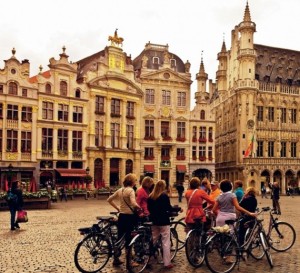 Brussels has a few more “hills” than Amsterdam or Bruges, so you are liable to see a wider selection of gears on your typical rental bikes here. It is also the least bike-friendly of the three cities listed here – though there are lots of bikes, and riding is generally safe, just beware that you are more likely to be riding beside city traffic without your own dedicated bike lane in Brussels. If you’re OK with that, a bike is a great way to get around the city.
Brussels has a few more “hills” than Amsterdam or Bruges, so you are liable to see a wider selection of gears on your typical rental bikes here. It is also the least bike-friendly of the three cities listed here – though there are lots of bikes, and riding is generally safe, just beware that you are more likely to be riding beside city traffic without your own dedicated bike lane in Brussels. If you’re OK with that, a bike is a great way to get around the city.
ProVelo: ProVelo was established in 1992 to promote all things bicycle in the European capital. They have a good selection of different bikes for riders of all ages and abilities, and just love supporting the use of bicycles by locals and tourists alike. Hours: Mon. > Fri. : 10:00 > 13:30 | 14:00 > 18:00; Sat. > Sun. + statutory holidays : 10:00 > 18:00 / Londonstraat 15 / tel. 02 502 73 55
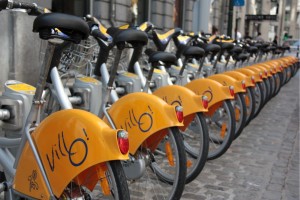 Villo: Not a traditional bicycle rental shop – Villo is a citywide bike hire system with stands all over the city approximately 500 metres apart. These bikes are heavy steel frame bikes meant to stand up to heavy usage. To use this system as a visitor, you must purchase a 1 day guest pass with your credit card, then use it to sign out bicycles at any of the stands. Ask a local for help if you are having trouble with the machine – but instructions are in English, so give it a try! Just look for the yellow “Villo” fenders as you walk the streets, or use this online map to find one close to you.
Villo: Not a traditional bicycle rental shop – Villo is a citywide bike hire system with stands all over the city approximately 500 metres apart. These bikes are heavy steel frame bikes meant to stand up to heavy usage. To use this system as a visitor, you must purchase a 1 day guest pass with your credit card, then use it to sign out bicycles at any of the stands. Ask a local for help if you are having trouble with the machine – but instructions are in English, so give it a try! Just look for the yellow “Villo” fenders as you walk the streets, or use this online map to find one close to you.
Bruges
 Ahhh… Bruges. My favourite destination in the Low Countries – a medieval timewarp, with absolutely flat streets emanating out from the central market square to some beautiful countryside. Rent a bike and just use it to get around town, or take it out past the windmills on the edge of town and ride to the little villages of Dam or Lissewege. Insider info: Hotel Adornes has free bikes for guests staying with them! Take your bike with you in the morning – stay out as long as you like!
Ahhh… Bruges. My favourite destination in the Low Countries – a medieval timewarp, with absolutely flat streets emanating out from the central market square to some beautiful countryside. Rent a bike and just use it to get around town, or take it out past the windmills on the edge of town and ride to the little villages of Dam or Lissewege. Insider info: Hotel Adornes has free bikes for guests staying with them! Take your bike with you in the morning – stay out as long as you like!
Koffieboontje Bike Rental: Literally right beside the bell tower on Market Square, this bike 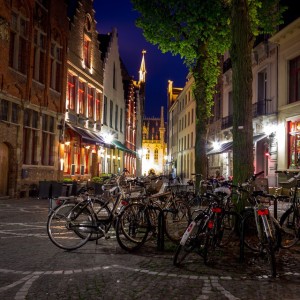 rental is located right in the lobby of the Hotel Koffieboontje. Just go up to reception and tell them you are interested in renting a bike (you’ll see the bikes right outside) and they’ll issue you a ticket that you bring to the bikeman who will emerge from some steep stairs outside the lobby. He’ll let you test out your bike until you find one you like, and then you’re off! Hours: daily, 10 AM to 10 PM / Hallestraat 4 / tel. 32 50 33 80 27
rental is located right in the lobby of the Hotel Koffieboontje. Just go up to reception and tell them you are interested in renting a bike (you’ll see the bikes right outside) and they’ll issue you a ticket that you bring to the bikeman who will emerge from some steep stairs outside the lobby. He’ll let you test out your bike until you find one you like, and then you’re off! Hours: daily, 10 AM to 10 PM / Hallestraat 4 / tel. 32 50 33 80 27
Bicycles Popelier: Oxford brand bicycles that are replaced every 6 months – they really take pride in their rental stock at Popelier. They have even started renting out electric bikes if you want some power-assist! Hours: vary – but opens daily at 10 AM. / Mariastraat 26 / tel. 32-50-343262
OneLife Tours is dedicated to the absolute best in European travel experiences for our small groups. If you want your travel in Europe to be authentic and focussed on being a “temporary local” then we’re your company!
[author] [author_image timthumb=’on’]https://pbs.twimg.com/profile_images/506116251454697472/4blfsXiS.jpeg[/author_image] [author_info]This blog happily shared with you by Craig Bresett (just back from a bike ride) – owner and chief tour director at OneLife Tours. Contact Craig anytime: craig@onelifetours.ca[/author_info] [/author]

